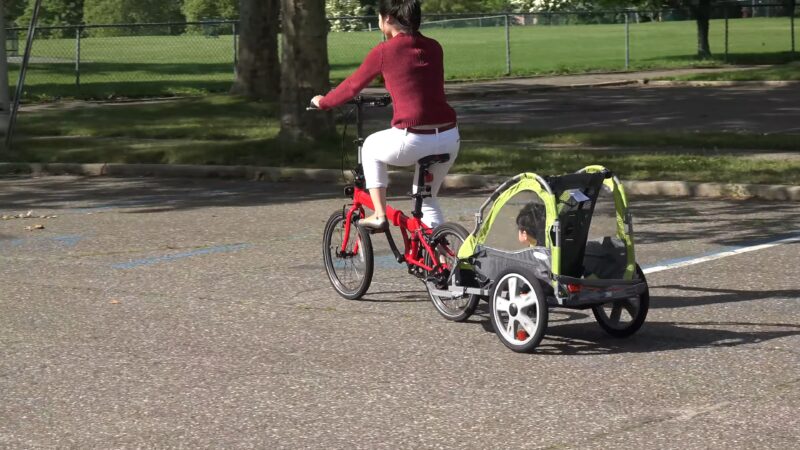There’s nothing quite like the feeling of the wind as you pedal along, especially when you’re sharing the journey with your little one or some precious cargo in an Instep bike trailer. But before we set off on our adventure, it’s crucial to ensure that our trailer is attached correctly.
Not only does it guarantee a smooth ride, but it also ensures the safety of both the rider and the passenger. Let’s get that trailer hitched up the right way!
Fun Fact: Did you know that bike trailers can also be used for grocery shopping or even transporting pets? Talk about versatility!
Preparations
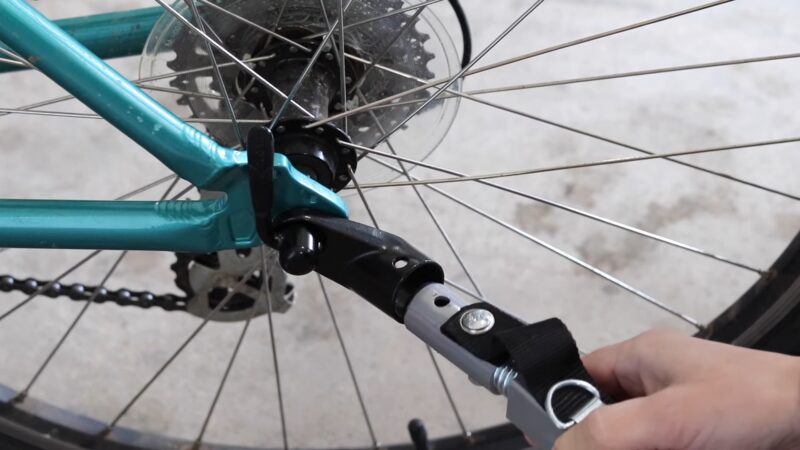
Before we begin, let’s make sure we have everything we need. Here’s a checklist to help you out:
- The Trailer: Well, this one’s a given, isn’t it?
- Bicycle: Ensure it’s compatible with the trailer you have.
- Hitch: This is the connector piece that will attach the trailer to your bike.
- Safety Gear: Think helmets, gloves, and maybe even knee pads if you’re feeling extra cautious.
- Specific Tools: Some trailers might require particular tools for attachment. It’s always a good idea to have a basic tool kit on hand.
Pro Tip: Always check the tire pressure of both the bicycle and the trailer before setting off. It can make a significant difference in how they handle.
Choose the Right Location
Location, location, location! It’s not just a mantra for real estate agents. When attaching your trailer, you want to be on a flat surface to ensure stability.
Good lighting is essential so you can see what you’re doing, and a quiet spot with minimal distractions will allow you to focus on the task at hand. A driveway or a quiet street can be ideal.
Remember, safety first!
Trailer Components
Getting to know your trailer is like getting to know a new friend. Let’s familiarize ourselves with its various parts:
- Frame: This is the main body of the trailer, where your cargo or child will sit.
- Wheels: They keep the trailer rolling smoothly. Some trailers come with a single wheel, while others might have two.
- Hitch: This is the connector that attaches the trailer to your bicycle.
- Safety Features: These can include reflectors, safety flags, and even brake systems.
Fun Fact: Some bike trailers can be converted into strollers. How’s that for multi-functionality?
Read the Instruction Manual
I know, I know. Manuals aren’t the most exciting read, but trust me on this one. Every trailer is a bit different, and the manufacturer’s instructions will provide invaluable insights into attaching it correctly.
Plus, they might have specific warnings or recommendations that can be super helpful. So, grab a cup of coffee, find a comfy spot, and give that manual a quick read.
Attaching the Trailer
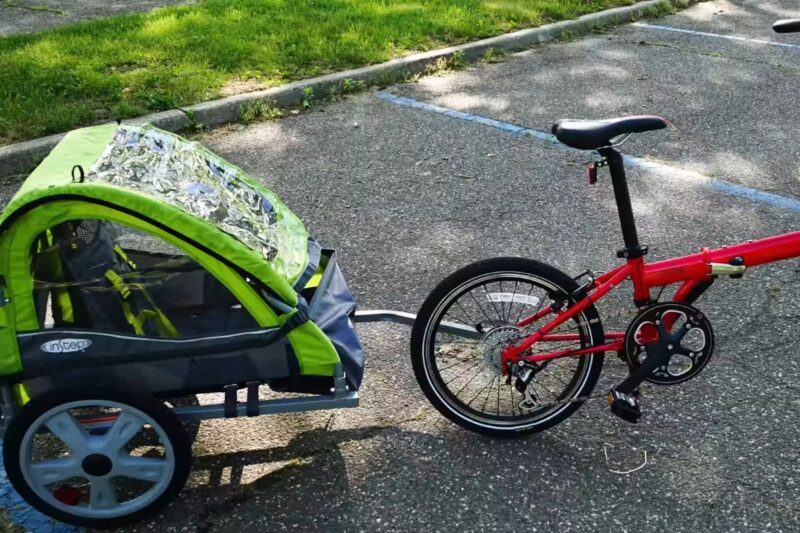
Prepare the Bicycle
First up ,let’s give our trusty bicycle a once-over. Ensure that it’s in tip-top shape, with tires pumped to the right pressure. Give the brakes a quick test, and make sure the bike stands stable. After all, a well-prepared bicycle is the foundation of a safe ride.
Pro Tip: It’s a good habit to periodically check your bicycle’s condition, even if you’re not attaching a trailer. Regular maintenance can extend its lifespan and keep you safe on the road.
Install the Trailer Hitch
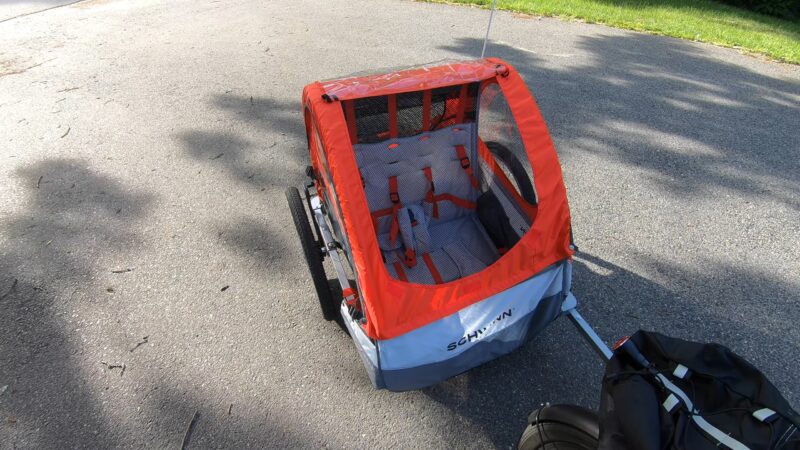
Now, onto the main event! Take the trailer hitch and attach it to the rear axle of your bicycle. Make sure it’s snug and secure. Some hitches come with safety pins or locks, so don’t forget to use them. They’re there to ensure the trailer stays attached, even on bumpy roads.
Fun Fact: The concept of a bike trailer isn’t new. People have been using them for decades to transport goods, children, and even pets!
Connect Safety Straps
Safety first! Once the hitch is in place, you’ll notice safety straps on the trailer. These straps should be connected to the bicycle frame, creating an additional layer of security. Pull on them a bit to ensure they’re tight and won’t come loose during your ride.
Loading the Trailer
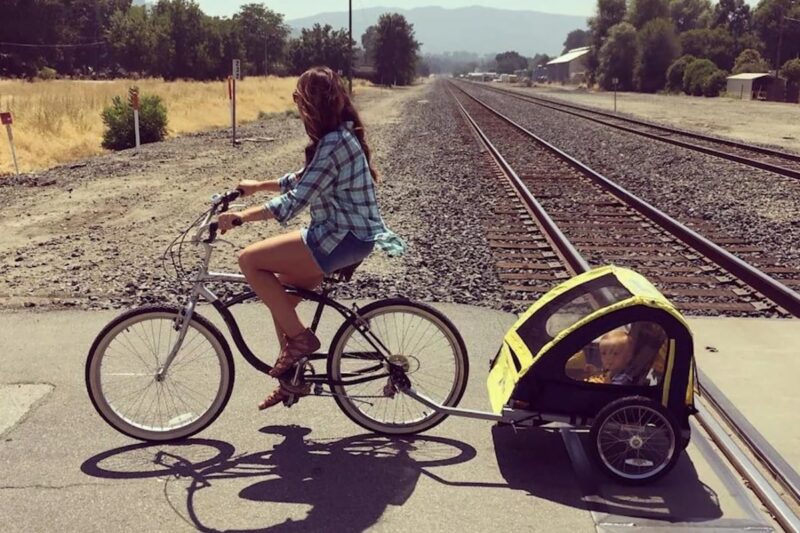
Place Cargo or Child in the Trailer
Alright, the trailer is attached, and we’re almost ready to roll! If you’re transporting cargo, make sure it’s evenly distributed in the trailer. This ensures balance and a smoother ride. If you’re taking your little one for a spin, make sure they’re seated comfortably.
Pro Tip: Always secure any items in the trailer to prevent them from moving around. Loose items can affect the trailer’s balance.
Use Safety Harness (if applicable)
Some trailers come equipped with safety harnesses, especially those designed for children. If yours has one, make sure to use it. Adjust the straps so they’re snug but not too tight, ensuring your child is safe and comfy.
Safety Precautions
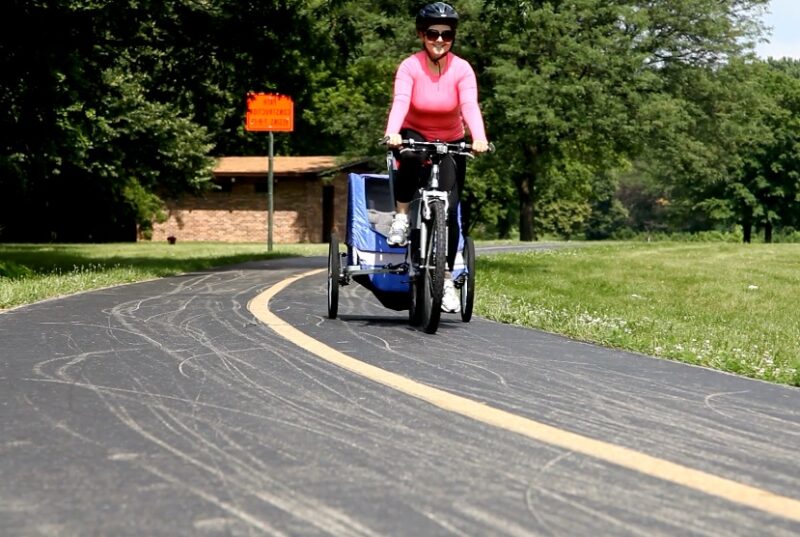
Helmet Use
I can’t stress this enough: helmets are a must! Whether you’re the rider or the passenger, always wear a helmet. It should fit snugly on your head, with the strap securely fastened. Remember, a helmet can make all the difference in case of an unexpected tumble.
Fun Fact: Helmets are designed to absorb impact and protect your head. They can reduce the risk of head injuries by up to 85%!
Reflectors and Lights
Visibility is key, especially if you’re riding in low-light conditions. Attach reflectors and lights to your trailer to ensure other road users can see you. This simple step can prevent accidents and keep you safe on the road.
Test Ride
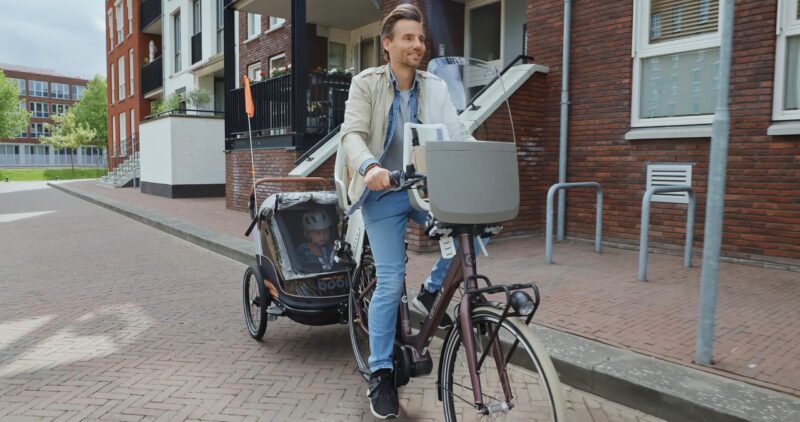
Before you head out on a long journey with your newly attached trailer, it’s wise to take a short test ride around your neighborhood. This will give you a feel for how the trailer handles and allow you to get used to the added weight and length. Pay attention to how the trailer responds to turns, stops, and accelerations.
As you ride, keep an ear out for any unusual noises and an eye on how the trailer moves. If you notice any wobbling, stop and check the attachments. Ensure everything is secure and that the weight inside the trailer is evenly distributed.
FAQ
Can I attach an Instep bike trailer to any type of bicycle?
While Instep bike trailers are designed to be versatile, it’s essential to check the compatibility with your specific bicycle model. Some bicycles, especially those with unique frame designs or non-standard rear axles, might require additional adapters or modifications. Always refer to both your bicycle’s and the trailer’s manuals for guidance.
How often should I inspect my trailer’s attachments and components?
It’s recommended to inspect your trailer’s attachments and components before every ride. Over time, wear and tear can affect the integrity of the parts. Regular checks ensure that everything remains in optimal condition, guaranteeing safety during your rides.
Is there a weight limit for what I can carry in my Instep bike trailer?
Yes, each Instep bike trailer model will have a specified weight limit, which includes the combined weight of cargo and passengers. Exceeding this limit can compromise the trailer’s stability and safety. Always refer to the manufacturer’s specifications for the exact weight capacity.
Can I use my Instep bike trailer in adverse weather conditions?
While Instep bike trailers are built to be durable, it’s essential to exercise caution in adverse weather conditions. Rain can make roads slippery, and strong winds can affect the trailer’s stability. If you must ride in such conditions, ensure your trailer is equipped with weather-resistant covers and take extra precautions while on the road.
Conclusion
Attaching an Instep bike trailer might seem like a daunting task at first, but with the right preparation and attention to detail, it becomes a breeze. The key is to ensure safety at every step, from choosing the right location for attachment to wearing helmets during the ride.
Once you’ve got everything set up, all that’s left is to enjoy the journey. Whether you’re transporting your child, pet, or cargo, a bike trailer offers a unique and enjoyable cycling experience.
So, gear up, stay safe, and happy cycling!
